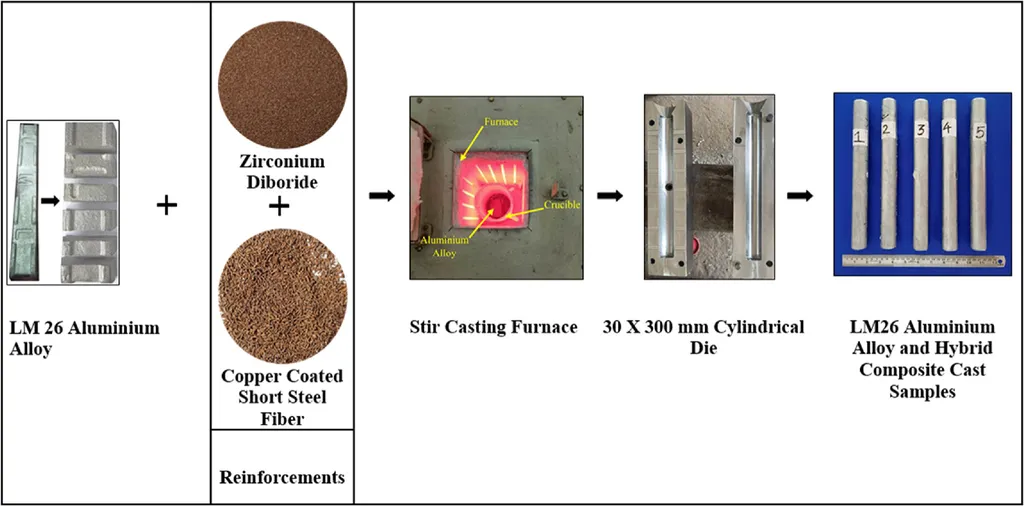In the realm of advanced manufacturing, a significant breakthrough has emerged from the labs of Sri Krishna College of Engineering and Technology, where researchers have optimized the Wire Electrical Discharge Machining (WEDM) process for a novel hybrid composite material. This development, led by Samson Jerold Samuel Chelladurai from the Department of Mechanical Engineering, holds promising implications for the energy sector and beyond.
The study, published in the journal *Discover Materials* (translated from the original title in another language), focuses on a hybrid composite reinforced with titanium diboride (TiB2) and fly ash, a byproduct of coal combustion. This composite, based on the LM24 aluminum alloy, exhibits enhanced hardness and strength due to its fine, evenly distributed microstructure. The research team employed Response Surface Methodology (RSM) and desirability function to optimize the WEDM process parameters, aiming to maximize material removal rate (MRR) and minimize surface roughness (Ra).
“Our goal was to find the optimal balance between these two conflicting objectives,” Chelladurai explained. “We wanted to maximize the material removal rate to improve productivity, while also minimizing surface roughness to ensure the quality of the machined parts.”
The optimization process identified pulse duration as the most significant factor. The best set of parameters, as determined by the desirability function, included a pulse duration of 110.36 µs, inter-pulse time of 40.0001 µs, cutting speed of 1.19995 mm/min, and servo control voltage of 54.9995 volts. This combination yielded a desirability score of 0.942, indicating a good compromise between MRR and Ra. Confirmation tests showed minimal errors, validating the optimization method.
The study also compared the desirability function with Grey Relational Analysis (GRA), revealing distinct optimal parameter sets. This comparison highlights the inherent trade-off between maximizing productivity and achieving superior surface quality, offering valuable insights for application-specific needs.
The implications of this research are far-reaching, particularly for the energy sector. The optimized WEDM process can enhance the precision and efficiency of manufacturing components for energy systems, such as turbines and generators. Moreover, the use of fly ash as a reinforcing material promotes sustainability by repurposing an industrial byproduct.
As Chelladurai noted, “This research not only advances our understanding of the WEDM process but also contributes to the development of sustainable and high-performance materials for various industries.”
The findings of this study pave the way for future developments in advanced manufacturing, particularly in the energy sector. By optimizing the WEDM process for hybrid composites, researchers have opened new avenues for improving productivity, quality, and sustainability in industrial applications.

